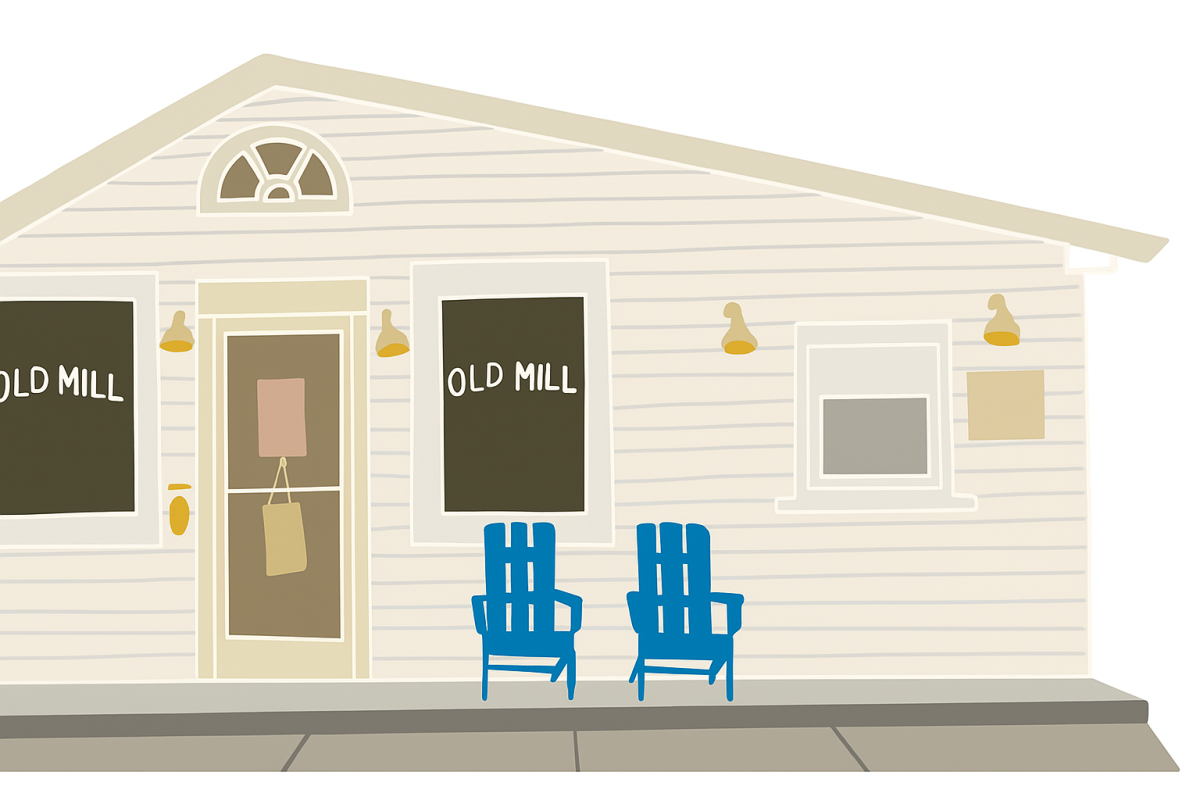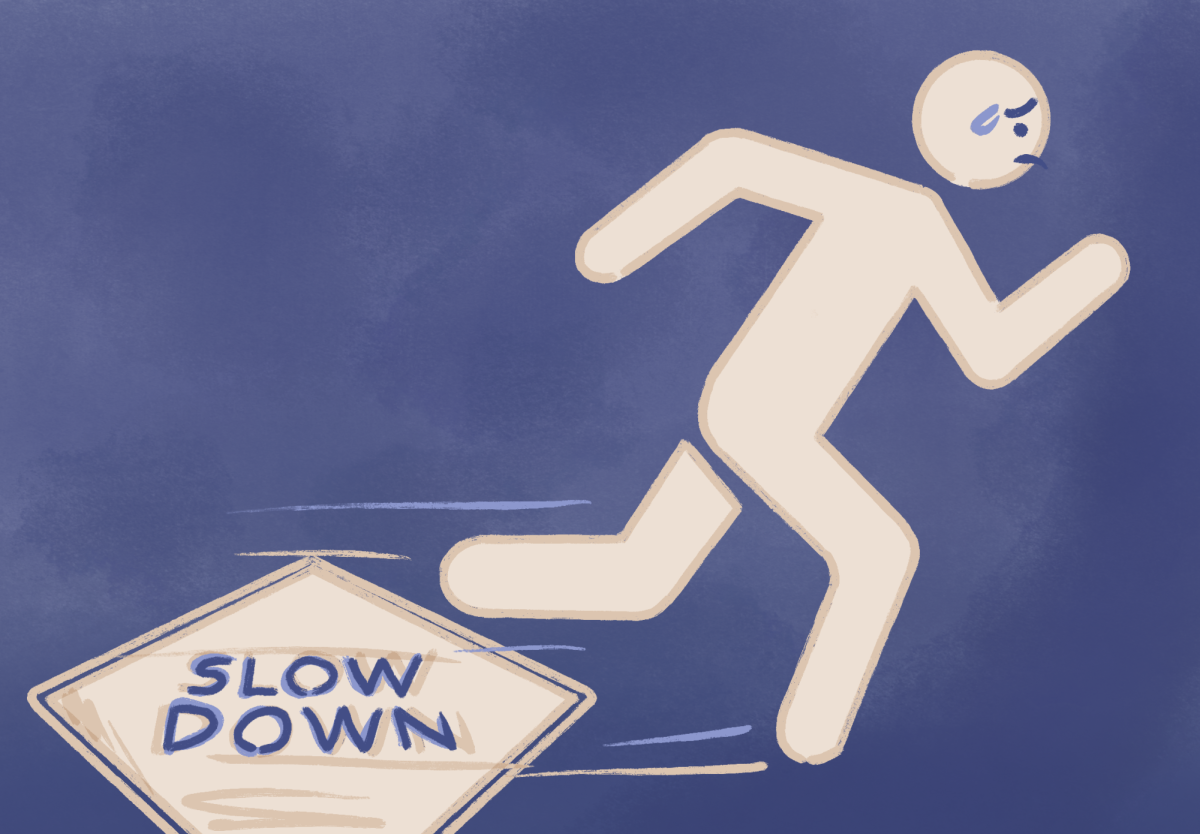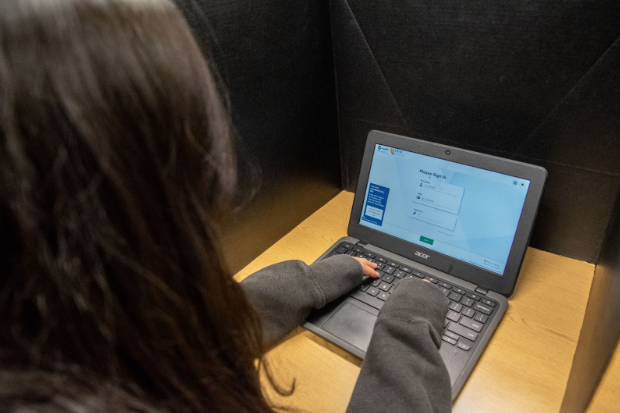i-Ready. CAASPP. Two names the majority of Day Creek students dread to hear. It is the season of standardized testing, a time of long hours on a computer, forced silence, and teachers milling about watching for cheaters. Supposedly, assessments help instructors see what they still need to teach their students. But is the struggle really worth it?
Let’s rewind time by a couple hundred years. According to JSTOR Daily, “In 1845 educational pioneer Horace Mann had an idea. Instead of annual oral exams, he suggested that Boston Public School children should prove their knowledge through written tests.”
Unlike today’s tests, early exams were meant to reveal intellect, or how capable students were of learning, not how much material they had mastered. In essence, previous tests assessed how big your shoe was, while modern tests evaluated the foot that filled it.
But things changed. JSTOR Daily reports that by “the 1960s, the federal government started pushing new achievement tests designed to evaluate instructional methods and schools. The weight placed on those tests grew over the decades as the Cold War and the globalizing economy put a spotlight on schools’ production of a skilled workforce.”
Schools were expected to create competent students prepared to find jobs. Standardized tests were believed to be a reliable method to see whether or not certain students were learning what was perceived to be needed.
In California, there are numerous tests administered to middle school students, including the CAASPP (California Assessment of Student Performance and Progress), i-Ready diagnostic, and PFT (Physical Fitness Testing). These tests take hours, and often requires several days over two weeks. Is all this time going to waste?
“I do think it wastes class time, because that’s a long time to be taken out, and it just limits valuable class time,” says Miss Trevarthen, a seventh grade teacher.
Time spent on testing can take away from other assignments. According to Medium, “Standardized testing can take almost two weeks out of the school schedule. During those two weeks students could be learning instead of spending time taking worthless tests that don’t teach them anything.”
Students are also faced with the pressure and anxiety of assessment results.
“It just stresses me out, and I can’t wait to go to high school when we don’t have to take i-Ready,” said Anika C., a seventh grader.
Is all the time and effort worth it? Are the tests even accurate or valid?
“I think sometimes, just like any test, you can have an off day. Some kids have testing anxiety or a fixed mindset, and so sometimes it doesn’t accurately reflect [what students have learned],” said Mrs. Porter, a seventh grade teacher on campus.
Some students may not perform well simply because of their mood or mental state, which makes the results inaccurate. Plus, the test only measures what students know on certain subjects.
According to ProCon.org, “Standardized tests can only, at best, evaluate rote knowledge of math, science, and English. The tests do not evaluate creativity, problem solving, critical thinking, artistic ability, or other knowledge areas.”
While testing is an easy target on campus, instructors do acknowledge that there are some benefits.
“It’s used as a tool for [teachers]. There’s lessons and feedback that [it] gives us about all students. For example, most hadn’t met the standard of analyzing sonnets, so we did supportive lessons. If we are using it that way, it is absolutely valuable,” said Mrs. Porter.
As tests like i-Ready are used to guide lessons, they may be helpful for students to reach California’s state standards.
“It helps the teachers figure out what they still need to learn, so it makes the best of the time left at school,” said Makayla M., a student from Day Creek.
It also gives students a more personalized class experience. Earning a high score can also feel gratifying.
“I get excited about growth, especially when I have a student that wasn’t meeting standards when they came into the beginning of the year, and then they really work hard and show a lot of growth. That, to me, is very rewarding, and I hope they find it rewarding too,” said Mrs. Porter.
Another benefit is sharing student success with parents at home.
“It’s a valuable communication tool for students, teachers, and parents,” said Mrs. Porter.
Aside from discovering where a student has shown growth and where they need a little more help, standardized tests also give teachers an idea of what they should be teaching in their PACK (what Day Creek calls universal access) classes.
“Since our PACK classes are based off of i-Ready scores, it does [give] an accurate depiction of what students’ levels are. I can go straight to i-Ready and pull from my PACK roster specifically what topics they struggled with. It even gives me tools to teach what we should be practicing, so I don’t just pick something random,” says Miss Trevarthen.
Even though there are many benefits to standardized testing, students still come to dislike them. But keeping an open mind will help test takers find success.
“A trap that some students fall into is [saying], ‘I hate testing,’ which doesn’t help because you have to take it, so you might as well show what you know,” said Mrs. Porter.
This story was originally published on The Day Creek Howl on April 18, 2023.







































